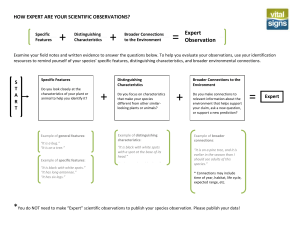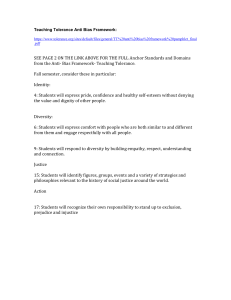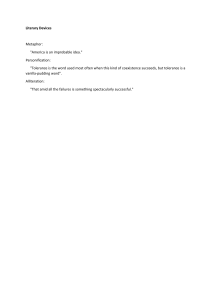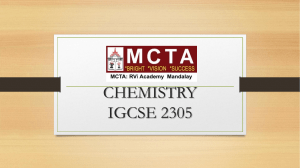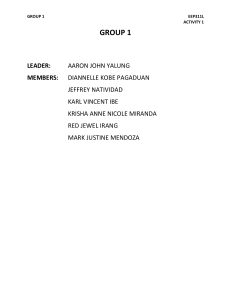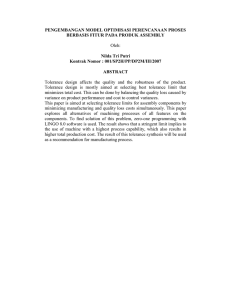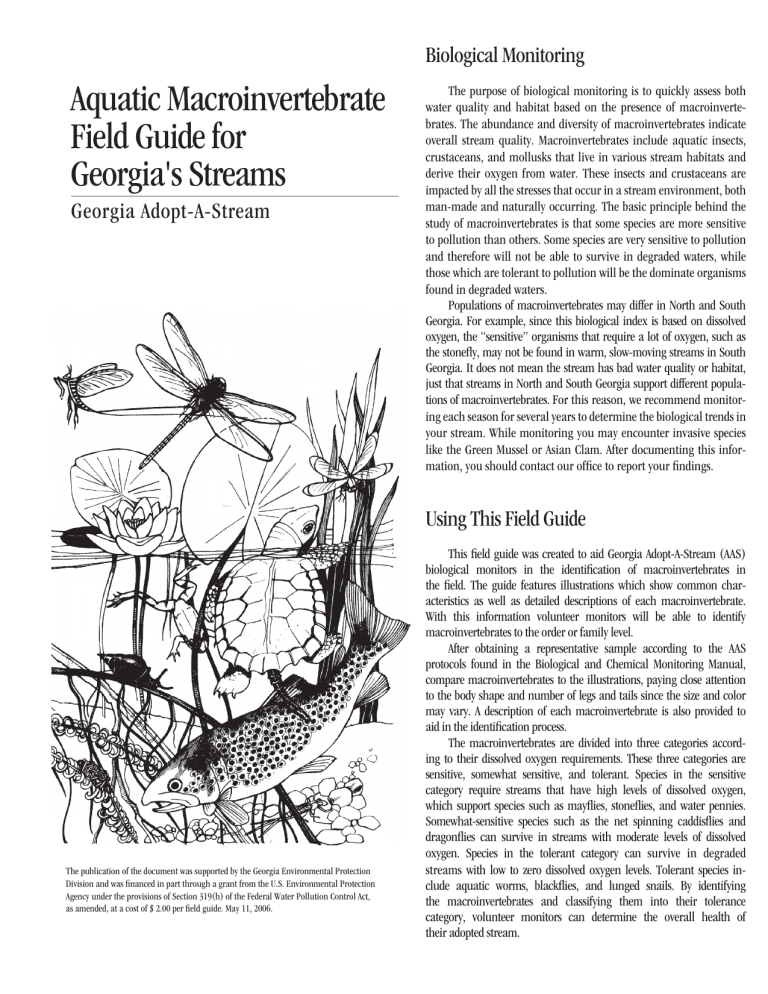
Biological Monitoring Aquatic Macroinvertebrate Field Guide for Georgia's Streams Georgia Adopt-A-Stream The purpose of biological monitoring is to quickly assess both water quality and habitat based on the presence of macroinvertebrates. The abundance and diversity of macroinvertebrates indicate overall stream quality. Macroinvertebrates include aquatic insects, crustaceans, and mollusks that live in various stream habitats and derive their oxygen from water. These insects and crustaceans are impacted by all the stresses that occur in a stream environment, both man-made and naturally occurring. The basic principle behind the study of macroinvertebrates is that some species are more sensitive to pollution than others. Some species are very sensitive to pollution and therefore will not be able to survive in degraded waters, while those which are tolerant to pollution will be the dominate organisms found in degraded waters. Populations of macroinvertebrates may differ in North and South Georgia. For example, since this biological index is based on dissolved oxygen, the “sensitive” organisms that require a lot of oxygen, such as the stonefly, may not be found in warm, slow-moving streams in South Georgia. It does not mean the stream has bad water quality or habitat, just that streams in North and South Georgia support different populations of macroinvertebrates. For this reason, we recommend monitoring each season for several years to determine the biological trends in your stream. While monitoring you may encounter invasive species like the Green Mussel or Asian Clam. After documenting this information, you should contact our office to report your findings. Using This Field Guide The publication of the document was supported by the Georgia Environmental Protection Division and was financed in part through a grant from the U.S. Environmental Protection Agency under the provisions of Section 319(h) of the Federal Water Pollution Control Act, as amended, at a cost of $ 2.00 per field guide. May 11, 2006. This field guide was created to aid Georgia Adopt-A-Stream (AAS) biological monitors in the identification of macroinvertebrates in the field. The guide features illustrations which show common characteristics as well as detailed descriptions of each macroinvertebrate. With this information volunteer monitors will be able to identify macroinvertebrates to the order or family level. After obtaining a representative sample according to the AAS protocols found in the Biological and Chemical Monitoring Manual, compare macroinvertebrates to the illustrations, paying close attention to the body shape and number of legs and tails since the size and color may vary. A description of each macroinvertebrate is also provided to aid in the identification process. The macroinvertebrates are divided into three categories according to their dissolved oxygen requirements. These three categories are sensitive, somewhat sensitive, and tolerant. Species in the sensitive category require streams that have high levels of dissolved oxygen, which support species such as mayflies, stoneflies, and water pennies. Somewhat-sensitive species such as the net spinning caddisflies and dragonflies can survive in streams with moderate levels of dissolved oxygen. Species in the tolerant category can survive in degraded streams with low to zero dissolved oxygen levels. Tolerant species include aquatic worms, blackflies, and lunged snails. By identifying the macroinvertebrates and classifying them into their tolerance category, volunteer monitors can determine the overall health of their adopted stream. INSECTS Stoneflies Caddisflies Mayflies Common Net Spinning Caddisflies Order: Plecoptera Size: ½" to 1½" Tolerance: Sensitive Distinguishing Characteristics: • Two hair-like tails • No gills on rear half of body •Structurally similar to mayfly nymphs, but have two tails instead of the usual three in mayflies • 2 claws on each foot Order: Ephemeroptera Size: ¼" to 1" Tolerance: Sensitive Distinguishing Characteristics: •Usually three long, hair-like tails (but sometimes only two) •Gills present on the rear half of body •1 hook on each foot Water Pennies Order: Coleoptera Size: up to ½" Tolerance: Very sensitive Distinguishing Characteristics: • Looks like a flat, oval disc • Plates extend from all sides •Cannot survive on rocks covered with excessive algae or inorganic sediment Riffle Beetles Order: Coleoptera Size: 1/16" to 1/8" Tolerance: Sensitive Distinguishing Characteristics: • Very small • Dark colored •Adult riffle beetles will be found walking on the bottom of the stream Aquatic Snipe Flies Order: Diptera Size: ¼" to 1" Tolerance: Sensitive Distinguishing Characteristics: • Body is pale brown to green color •Mostly cylindrical, with the front tapering to a cone-shaped point •Larva have a number of mostly paired caterpillar-like prolegs • Two stout, pointed tails with feathery hairs at back end Order: Trichoptera Size: ½" to 1 ½" Tolerance: Sensitive Distinguishing Characteristics: •Larva is caterpillar-like with three pairs of legs and tends to curl up slightly •Two claws at posterior (rear) end •May be found in a stick, rock, or leaf case with its head sticking out Order: Trichoptera Family: Hydropsychidae Size: up to 1" Tolerance: Somewhat sensitive Distinguishing Characteristics: •Body is caterpillar-like with three pairs of legs and is strongly curved •Dorsal plates (sclerites) on all three thoracic segments •Branched gills on the ventral surface of the last two thoracic segments and most of the abdominal segments •Usually have a bristle-like, setal tuft at the end of each anal proleg •Color varies from bright green to dark brown Dobsonflies/Hellgrammites and Fishflies Order: Megaloptera Size: ¾" to 4" Tolerance: Somewhat sensitive Distinguishing Characteristics: • Stout body with large pinching jaws •Eight pairs of pointed lateral appendages •On the rear end of the body a pair of stubby, unjointed legs (prolegs), each with a pair of claws •Dobsonflies/Hellgrammites have paired cotton-like gill tufts, fishflies lack these •Fishflies have two short tube-like structures on the tail end Dobsonfly Larva Fishfly Adult Fishfly Larva CRUSTACEANS Damselflies and Dragonflies Order: Odonata Size: ½" to 2" Tolerance: Somewhat sensitive Distinguishing Characteristics: •Both have large eyes, six legs, and a large lower lip that covers much of the bottom of the head •Damselflies are slender and have three oar shaped tails (gills) • Dragonflies have a stocky body without tails Crayfish Order: Decapoda Size: up to 5" Tolerance: Somewhat sensitive •Can withstand large ranges of pH and temperatures and is sensitive to toxic substances Distinguishing Characteristics: • Resembles a lobster •Has 10 legs and the two front legs have large claws or pinchers Aquatic Sow Bugs Dragonfly Adult Dragonfly Larva Crane Flies Order: Diptera Size: ¹/3" to 2 ½" Tolerance: Somewhat sensitive Distinguishing Characteristics: •Worm-like plump body •Can be found in a variety of colors (clear, white, brown, and green) •Segmented body with finger-like projections (gills) at the back end •Head is usually pulled back into the front of the body Midge Flies Order: Diptera Size: up to ¼" Tolerance: Tolerant •They can indicate poor stream health caused by pollution if found in large numbers Distinguishing Characteristics: •Often whitish to clear, but occasionally bright red • Segmented body •Has distinct head with two small prolegs in the front of the body • Display a spastic squirming action in the water Black Flies Order: Diptera Size: up to ¼" Tolerance: Tolerant Distinguishing Characteristics: •The body is larger at the rear end similar to the shape of a bowling pin • The distinct head contains fan-like mouth brushes • Often curl into a “u" shape when held in your hand Damselfly Order: Isopoda Size: ¼"- ¾" Tolerance: Somewhat sensitive Distinguishing Characteristics: • Flat, segmented body • Has an “armored" appearance • Seven pairs of legs •Can be confused with scuds, however they are flattened top to bottom Scuds 6" Order: Amphipoda Size: 1/8" to ¼" Tolerance: Somewhat sensitive Distinguishing Characteristics: • Resemble a small shrimp • Translucent body with silvery-gray or tan coloration • Seven pairs of legs •Unlike sow bugs, scuds are flattened side to side 5" Worms 4" Aquatic Worms ⅞" ¾" 5/8" ½" 3/8" ¼" ⅛" ⅞" ¾" 3/8" ½" 3/8" ¼" ⅛" ⅞" ¾" 5/8" ½" 3/8" ¼" ⅛" Class: Oligochaeta Size: Usually 1" but up to 4" Tolerance: Tolerant 3" Distinguishing Characteristics: ⅞" • Can be very tiny and slender or look similar to earthworms ¾" 5/8" • No legs, distinct head or any mouthparts ½" • Segmented body 3/8" •Aquatic worms can indicate organic pollution when they ¼" ⅛" dominate the majority of the sample collection 2" Leeches Class: Hirudinea Size: ¼" to 2" Tolerance: Tolerant Distinguishing Characteristics: • Somewhat slimy, soft, segmented body •Two suckers on the underside of the body, one in the front and one in the rear •Can be confused with a flatworm, however flatworms have no suckers and leeches have fine lines (annuli) across the body 1" ⅞" ¾" 5/8" ½" 3/8" ¼" ⅛" ⅞" ¾" 5/8" ½" ⅛" ¼" ⅛" MOLLUSKS Gilled Snails Class: Gastropoda Size: ¼"-1" Tolerance: Sensitive •Gill breathing; therefore, they are more sensitive to low dissolved oxygen than lunged snails Distinguishing Characteristics: •Usually opens to the right when the narrow end is pointing upward • Shell opening covered by a thick plate (operculum) • When monitoring, do not count empty shells Lunged Snails Class: Gastropoda Size: up to 2" Tolerance: Tolerant •They can tolerate severe organic or nutrient pollution that consumes oxygen in the water Distinguishing Characteristics: •Usually opens to the left when the narrow end is pointing upward •Have no operculum and breathe oxygen from the air •When monitoring, do not count empty shells Clams and Mussels Class: Bivalvia Size: up to 5" Tolerance: Somewhat sensitive Distinguishing Characteristics: •Fleshy body enclosed between two clamped shells • If alive, the shells cannot be pried apart • When monitoring, do not count empty shells Special Thanks: This field guide draws on the experience of many professionals. Georgia Adopt-AStream gratefully acknowledges the following people for their advice and support: Tommy Moorman, Scientific Artist Sue Eggert, Ph.D., Department of Ecology, University of Georgia Broughton A. Caldwell, Florida State Collection of Arthropods, Division of Plant Industry/Florida Department of Agriculture & Consumer Services References: Brigham, A.R., W.U. Brigham, and A. Gnilka (eds.) 1982. The aquatic insects and oligochaetes of North and South Carolina. Midwest Aquatic Enterprises, Mahomet, IL. Izaak Walton League of America, 2003. A Volunteer Monitor’s Field Guide to Aquatic macroinvertebrates. McCafferty, W.P. 1981. Aquatic Entomology. The Fisherman’s and Ecologists Illustrated Guide to Insects and Their Relatives. Science Book International, Boston, MA. Merritt, R.W., and K.W. Cummings (eds.) 1996. An Introduction to the Aquatic Insects of North America. 3rd edition. Kendall/Hunt Publishing Company, Dubuque, IA. Thorpe, J.H. and A.P. Covich (eds.) 1991. Ecology and classification of North American freshwater invertebrates. Academic Press, San Diego, CA. Voshell, J.R. 2002. A Guide to Common Freshwater Invertebrates of North America. The McDonald & Woodward Publishing Company, Blackburg, VA. Georgia Adopt-A-Stream Georgia Adopt-A-Stream (AAS) is a statewide volunteer water quality monitoring program. AAS is housed in the NonPoint Source Program in the Watershed Protection Branch of the Georgia Environmental Protection Division and is funded by Section 319(h) of the Federal Water Pollution Control Act. The program is dedicated to increasing public awareness of the State’s nonpoint source pollution and water quality issues. To accomplish these goals, AAS encourages individuals and communities to monitor and improve sections of streams, wetlands, lakes or coastal waters. AAS offers many levels of involvement. At the most basic level, a new group may register their site with AAS and complete a watershed and visual study. If volunteers wish to learn more about their adopted body of water, they are encouraged to attend one of our hands-on workshops in biological or chemical monitoring. These free workshops are provided across the State and are taught by certified AAS Trainers. AAS has more than 60 Community/Watershed Programs that organize monitoring activities in their watershed, county, or city. These local AAS programs use the AAS model to promote nonpoint source pollution education and data collection in their area. The State office works closely with these programs to ensure volunteers are receiving appropriate support and training. Adopt-A-Stream currently has over 1,200 active volunteers monitoring nearly 200 sites. Our bi-monthly newsletter has over 4,500 subscribers. We invite you to join us to help protect Georgia’s water resources. For more information about getting involved or to adopt your stream, please contact the State office. Contact Information: Georgia Adopt-A-Stream Department of Natural Resources Environmental Protection Division 4220 International Parkway, Suite 101 Atlanta, GA 30354 Phone: (404) 675-6240 Fax: (404) 675-6245 www.georgiaadoptastream.com
